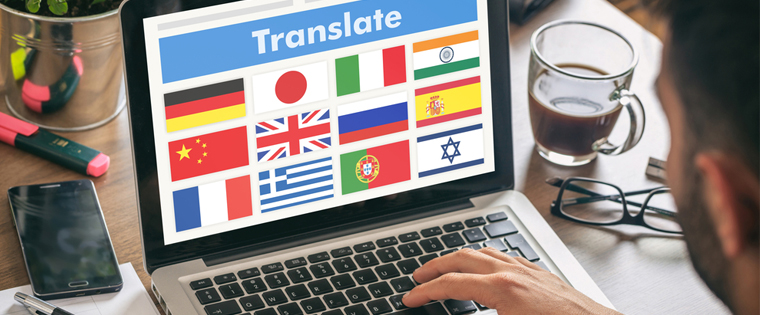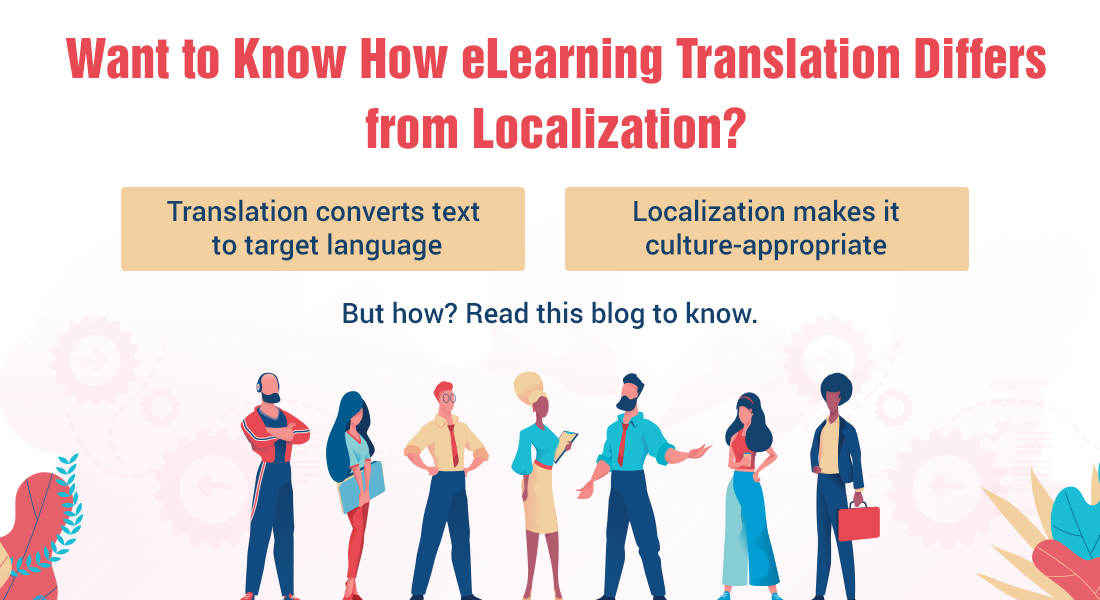The What, Why, and How of eLearning Localization!
Merely translating your eLearning courses is never enough. Localizing them is vital. Read this blog to gain insights on eLearning localization.

Nieman Journalism Labs conducted a study which proved that geo-targeted Facebook posts have six times more engagement than those shared globally. Yes, we do translate our eLearning courses to ensure they are geo-targeted. But is that really enough? Does mere translation of the content ensure the course is aligned with the regional nuances of your target employees? Actually, no. This is where the role of eLearning localization comes in.
What is eLearning Localization?
eLearning localization is all about adapting content to a specific location and its culture.
Why is Localizing Courses Important?
- Eliminates cultural differences
- Helps boost knowledge acquisition and increases retention
How Can Localization Be Done Effectively?
- Identify the need for localization in the early stage of eLearning development
- Know your target audience
- Ensure content is localization-friendly
- Focus not just on the language, but also the design
What is eLearning Localization?
eLearning localization is all about adapting the content in an eLearning course to a specific location and its culture. You might be wondering, “But how is localization different from translation?” Well, even though we often come across situations when both terms are used interchangeably, that’s not quite the case.
Localization is a subset of translation. While translating an eLearning course means translating it from the source language to a target language, localization includes adapting the course to suit the target culture. This includes adapting the:
- Images, photos, and symbols
- Graphical User Interface (GUI)
- Tone of audio narration
- Units of measurement, dates, currency
- Fonts
- Idioms and abbreviations
… and many more.
The primary intention of eLearning localization is to convey the exact meaning as the source course, with the right emotion in a particular cultural setting.
Why is eLearning Localization Important?
Eliminates Cultural Differences
Let’s talk colors. While green is the national color and stands for independence in Mexico, it is forbidden in Indonesia. Red is a symbol of purity and spirituality in India but associated with death in Africa. While yellow represents envy in Germany, it represents happiness in Egypt. This proves that each country or region has its own cultural specifications.
Now, do you think an eLearning course filled with images and backgrounds primarily green in color is something employees in Indonesia will embrace with ease? Definitely not. Localizing the course ensures such cultural nuances are taken care of by completely aligning the course with the culture of the intended target location.
Besides colors, it eliminates cultural differences that occur in the fonts, tone of the audio narration (countries in the West prefer an open, friendly tone whereas countries in the East prefer authoritative tones), gestures, symbols, and more. Taking care of such cultural nuances will clear misinterpretations and make eLearning content relatable to learners, thus providing an effective learning experience.
Helps Boost Knowledge Acquisition and Increases Retention
Translation alone can boost knowledge acquisition and increase retention only to a certain extent. No matter how perfect eLearning translation is, if the course is not aligned with a learner’s culture, it would be a real put off. But once you localize the course, it will definitely be easier to acquire and also be retained longer since learners will be able to relate better.
For example, you are planning to deliver a sales training course on ‘Body Language’ to your sales reps spread across the globe. The course meant for your US reps might have an image of the salesperson shaking hands with the customer on meeting. Considering that individuals in Japan greet each other by bowing, will the same image be effective in a course for your Japanese reps? Obviously not. The course should be localized and an image of the sales representative bowing down should be included.
When learners come across such images, examples, or even fonts aligned with their specific culture, knowledge acquisition is made easy and also will lead to an increase in retention; learners will be able to better apply whatever they learn at the workplace.
How Can eLearning Localization Be Done Effectively?
Focus NOT Just on the Language, but Also the Design
Let’s imagine you are localizing a course for your employees in France. You’ve translated the text appropriately but did not localize the course. As a result, most of the images and graphics are primarily in white. Now, no matter how effectively you’ve translated the course, employees might not embrace it or relate to it. Wondering why? This is because the color white is associated with mourning in France.
Alright, let’s take another example. Maybe the course you developed for your employees in Britain includes a video showing an employee snapping his fingers to recollect something quickly. Now, you are planning to deliver the same course to employees in Latin America. In this case, you will have to localize the course and ensure this gesture is changed. Why? Because in Latin America, this gesture implies asking someone to hurry up, and learners might end up misinterpreting the meaning.
You also need to keep in mind that localizing an eLearning course is not just about localizing the content but also about localizing the entire GUI (graphical user interface) and the design – be it the choices of colors or the fonts used. Each of these design aspects within an eLearning course might convey a different meaning in different regions, and thereby lead to misinterpretations, leading to an ineffective delivery of the training content.
Know Your Target Audience
Your employees completely disregarding or not engaging enough with your eLearning course is the last thing you would want. But this is what will happen if you plan on localizing the eLearning course without gathering adequate knowledge on the target audience – the audience for whom you are localizing the course.
This is in fact the first step one needs to engage in when planning to localize an eLearning course. Localizing content – be it eLearning or any other – is impossible if you do not have adequate knowledge about the audience you are localizing the course for, the target audience. Research well about their cultural preferences, the dialects they prefer, writing tone, spelling variations etc., and ensure you nail them.
Identify the Need for Localization in the Early Stage of eLearning Development
It’s extremely important that you identify the need for localization right when you are designing the eLearning course. This will help you design and develop the course in a localization-friendly way. A few tips to develop a localization-friendly eLearning course:
- Use minimal multimedia and keep graphics simple as redeveloping images or other multimedia will lead to additional time and cost.
- Try to incorporate neutral humanoid images wherever possible instead. For example, the image of Vodafone’s zoo-zoos. No matter where individuals are from, everybody can relate to zoo-zoos.
- Avoid using text on images as extracting the text that has been embedded in the image is additional work and adds to the time and budget.
- Test the chosen font’s compatibility with the target languages to avoid complications. All languages do not support all fonts.
- Avoid using humor and idioms as it might turn out be a strenuous task to localize them for certain regions.
Translating your eLearning courses will surely ensure improved performance as there is nothing better than learning in one’s native language. But localizing your eLearning courses will ensure an even better acquisition and retention of knowledge as every single element in the eLearning course will be aligned to your learners’ culture.





